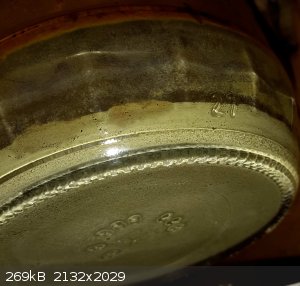
RogueRose - 9-3-2018 at 21:55
I had lots of large old nails (70-80+ years old) that I wanted to dissolve slowly and I used 10% vinegar. After about 4 months (agitation every
other day) in a 2L bottle, I had a dark brown liquid with a very fine tan/brown dust sediment (sticks to bottom 1/2 of bottle) at the bottom. This
batch I neutralized with baking soda and it gave me a green precipitate (looks almost identical in color to copper carbonate but a tad darker) with an
orange/rust color top layer that always re-appears and very slowly grows deeper. Upon heating the green precip, it turned red/brown and was extremely
fine and fluffy.
Round 2 I used ~13% acetic acid and this time I added some 35% H2O2 (maybe 20ml, once a month for 3 months) to the 2L bottle. When the H2O2 is added
the solution turns from brown to purple/pink (like pomegranate/cranberry juice mix) and this eventually turns dark brown as it oxidizes.
This time I wanted to try to make some iron hydroxide. I first tested a little Na2CO3 with the solution and it turned light grey with the same
orange/rust color on the very top like with the bicarb. There was obviously fizzing when adding the carbonate.
Moving to the NaOH, I didn't know how much I needed so I used more than I think I needed as I figure any extra can be washed out of the iron hydroxide
along with the sodium acetate. This solution turned much thicker and had a medium grey color (color of lead plates from car batteries). There is
very little orange/rust coloring with this, but it is still there but in MUCH smaller quantities. There was no reaction other than heat when adding
the NaOH
This orange/rust color stuff really reminds me of washing red pasta sauce our of a plastic container (especially white) where it stains the container.
Same color and it seems to stick almost the same as well until soap and scrubbing. Just thought it was odd.
So I looked up Iron hydroxide and oxides and didn't find any that were listed as grey or even off-white. I did find that iron carbonate is a white
powder and that makes sense when I used the carbonate as there is a fair amount of carbon in these nails.
Does anyone have any idea of what this compound might be? it is possible I have some odd complex between the iron, acetate, sodium and hydroxide?
Σldritch - 10-3-2018 at 04:43
Would be nice with a picture, anyway i would guess that it is the hydroxide of basic iron acetate.
https://en.wikipedia.org/wiki/Iron(III)_acetate
Note that the complex is positively charged, normally the anion is acetate but it can adopt different anions such has chloride, nitrate,
peroxydisulfate and probably hydroxide too. I have only tried producing the nitrate, peroxydisulfate and accidentaly the hydroxide. The nitrate is
soluble, the peroxydisulfate is fairly insoluble and the hydroxide (from ammonia) is insoluble but those water ligands could have been replaced by the
ammonia. (Which was the intended result).
RogueRose - 11-3-2018 at 09:53
Finally got them transfered and edited so here they are:
Iron Acetate & NaOH 3 hours after mixing
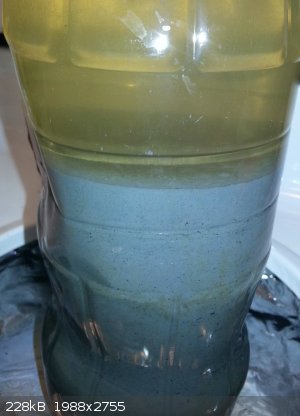
Iron Acetate & NaOH 6 hours after mixing - more settling
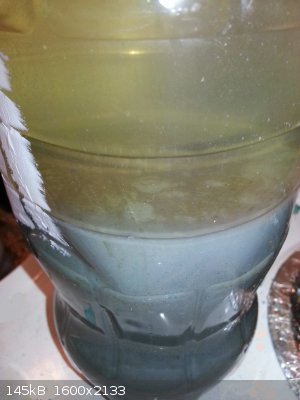
Iron Acetate & NaOH 6 hours after mixing - more settling - different angle
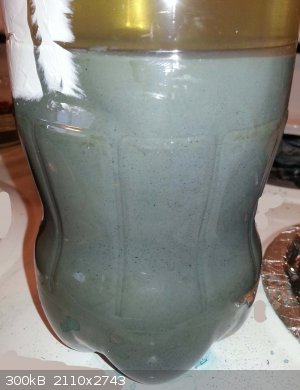
Iron Acetate & NaOH 18 hours after mixing - right container is liquid poured off from settled particulate
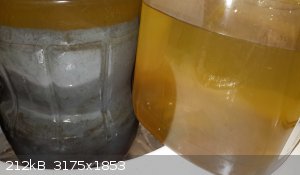
Iron Acetate with slight excess anhydrous Na2CO3 - 3 hours after mixing
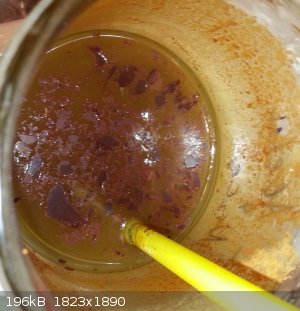
Iron Acetate with slight excess anhydrous Na2CO3 - 12 hours after mixing - lots more brown crust formed on top. This didn't seem to happen with the
NaOH
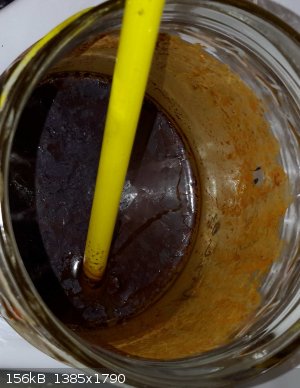
Iron Acetate & Na2CO3 - light grey precipitate - a good bit lighter than the precip from NaOH
